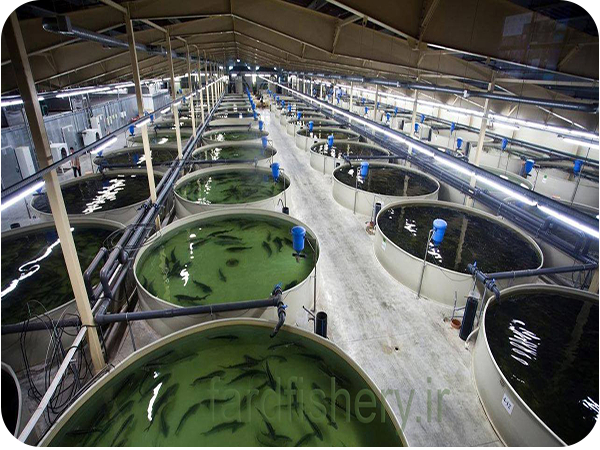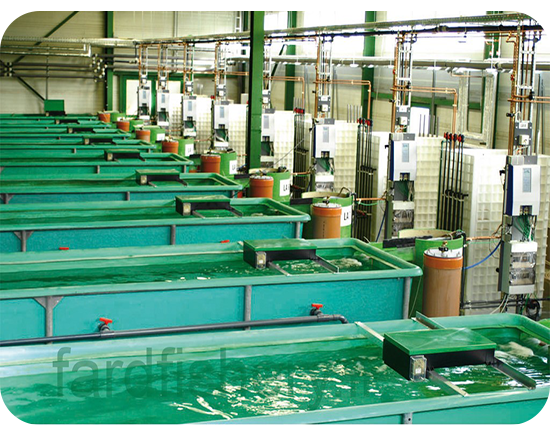Reproductive storage and injection ponds
Selected for breeding broodstock breeders who have undergone sexual maturity and are ready for artificial reproduction by hormone injection. Kazanski Pools are used as a pool of oval 6 m long and 3.5 m wide and 1.3 m deep, which is housed in a roof nest. The size of a Kazanski pool is 20 cubic meters, which usually fills up to 3.4 of its capacity. The main water enters the three lateral branches into the pool, each of which is 30 mm in diameter.
This allows water to flow into the pool in a way that can partially provide the environment for the breeders. A part of the breeder’s pool water is provided by a perforated transverse pipe drained over it. It is 160 mm in diameter from the center, and the pool overflow that enters an external reservoir through the pipe itself is also connected to the main outlet of the outlet water, according to a farm plan to reproduce 500,000 sturgeon. Taking into account the aggregation of breeders of elephants breeding here at 5 kg and based on available software And a considerable number of broodstock breeders will need about 5 ponds, about 2 ponds, depending on the amount of water needed for the pond at 3 liters per second. Put into operation.
Injection ponds:
These pools are also roofed and used for injecting brood stock. These pools are connected by valves that open and close with the Sandor system. The dimensions of these ponds are as follows: A special pond for the maintenance of male and female breeders for final stimulation and rearrangement:
Large diameter 5 meters Small diameter 5/3 meters Depth of one meter
Male and Female Brood Injection Pools Separately:
Diameter of 3.5 meters and depth of one meter
The smaller ponds are used to inject the first stage of the hormone, and are transferred from the two smaller ponds to the middle pond, which is larger for the third stage.
| اتاق خاویارسازي | 5*4 |
|---|---|
| سردخانه | 4*3 |
| اتاق کارشناس | 4*4 |
| سالن تخمکش و لقاح | 12*7 |
| سالن انکوباسیون | 16*12 |
Reproduction Salon
Given the capacity of each incubator 70,000 eggs of Beluga fertilized and baby fish production program, taking into account the number of eggs required 1200,000 approximately 18 Yushchenko incubators are needed. The water discharge required for each incubator at the time of most water requirement is 0.3 liters per second. Therefore, water consumption in the incubation chamber is 5.25 liters per second for one month.
The water used in the incubation hall is previously sterilized and sterilized by sand filters as well as UV and ozonation from mud and suspended matter. Also, to adjust the temperature, the aeration system outside the incubation room is also considered.



